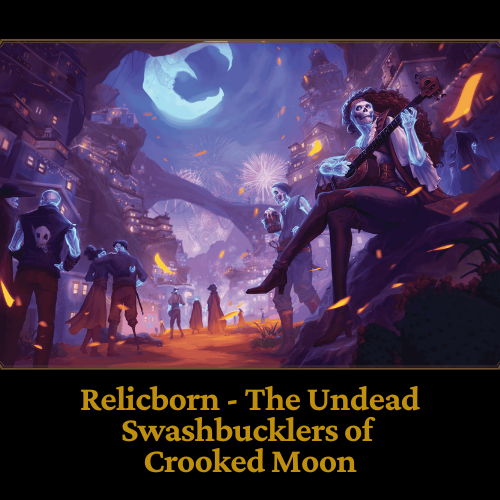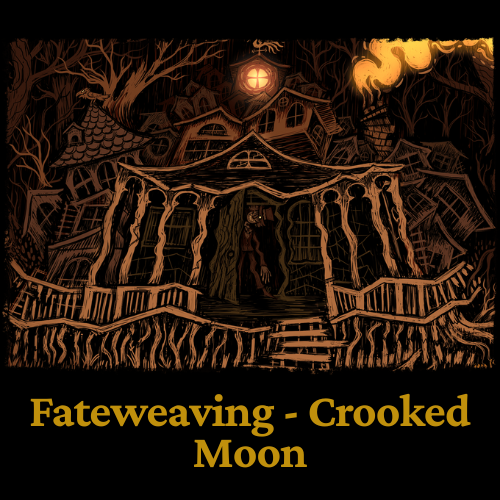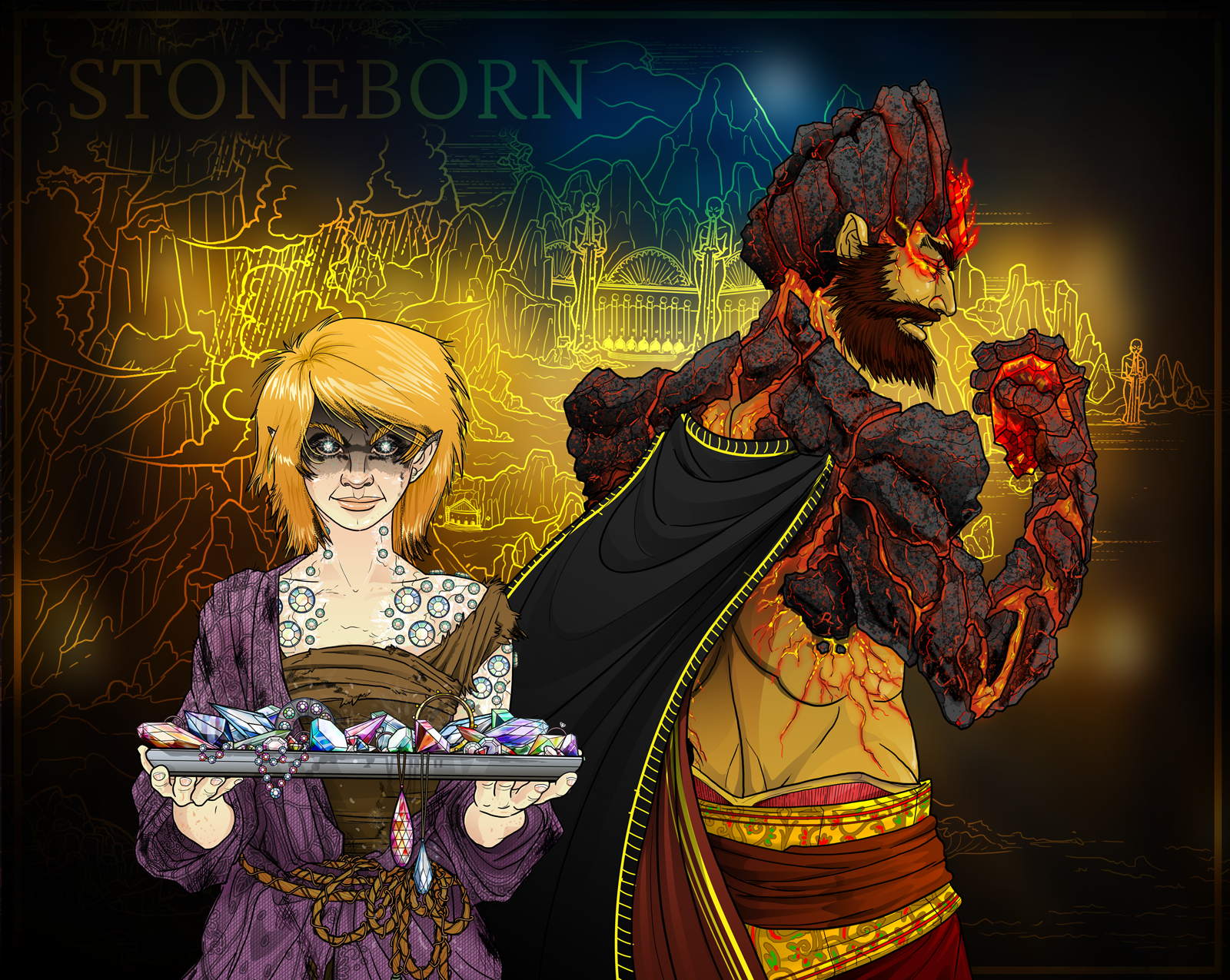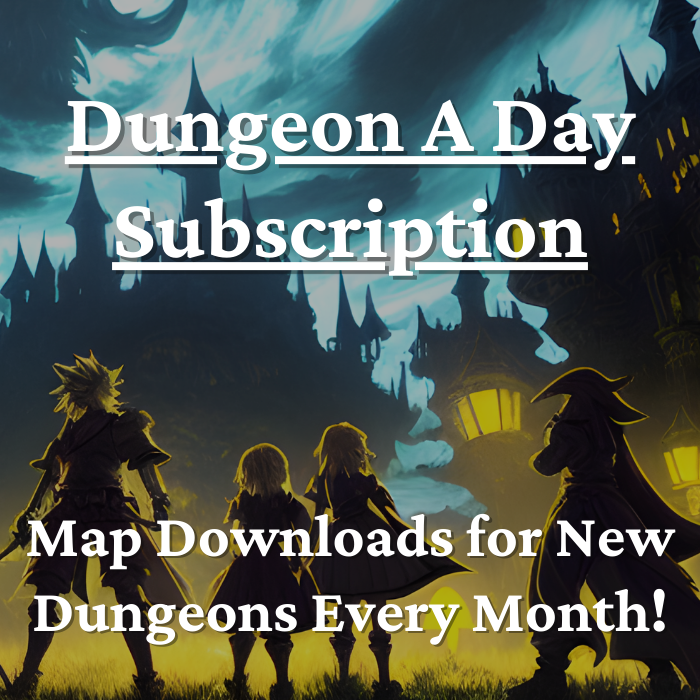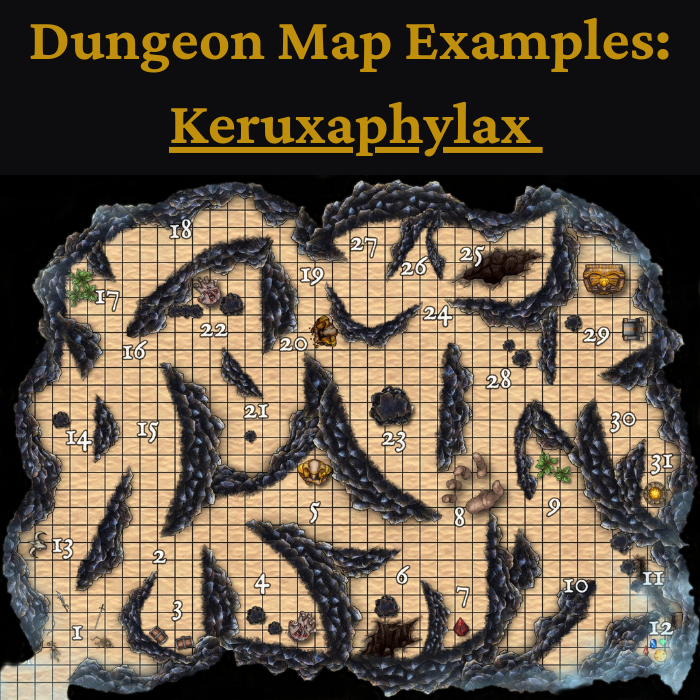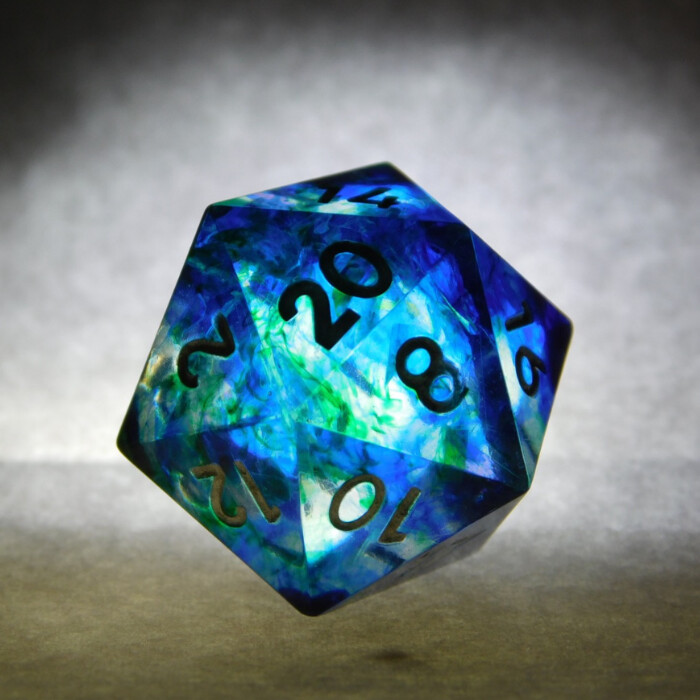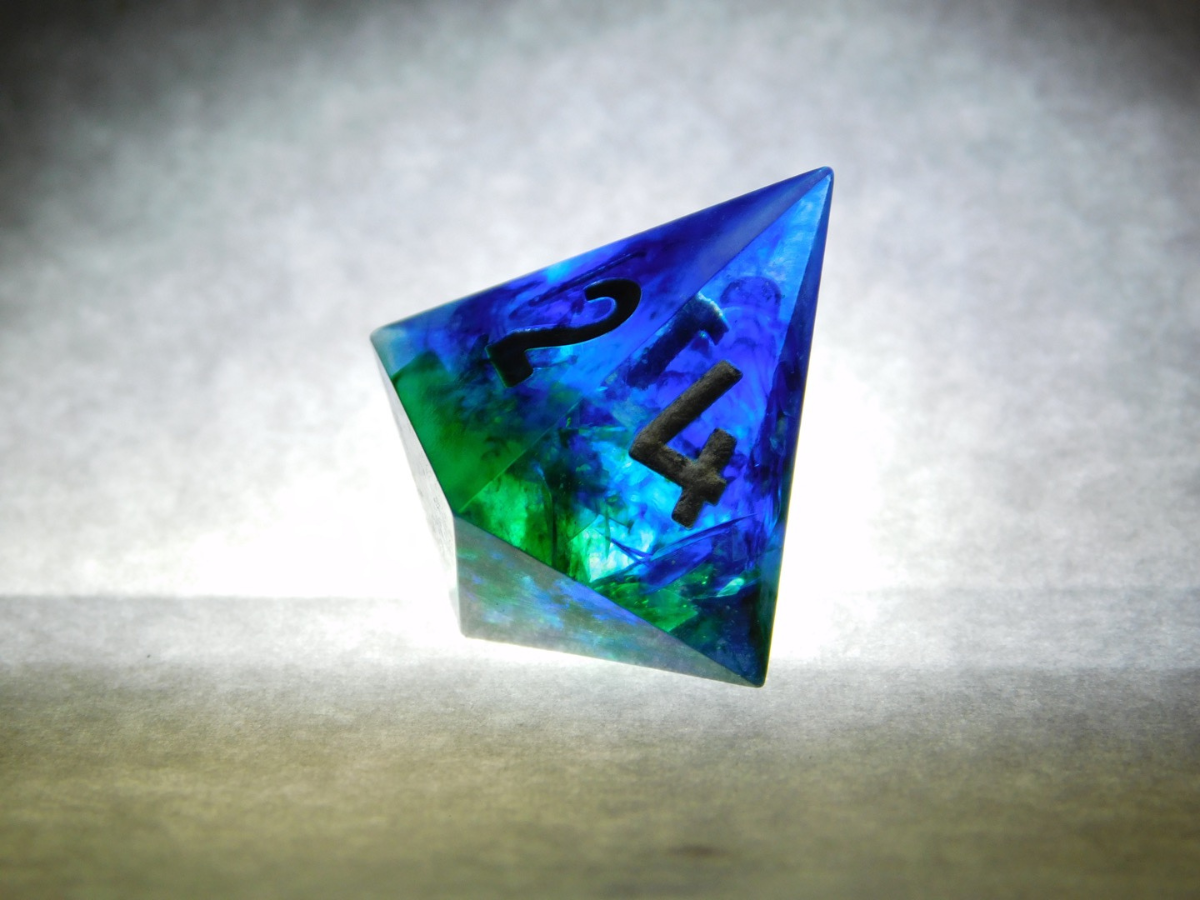Commune 5e - D&D 5th Edition Spell Book
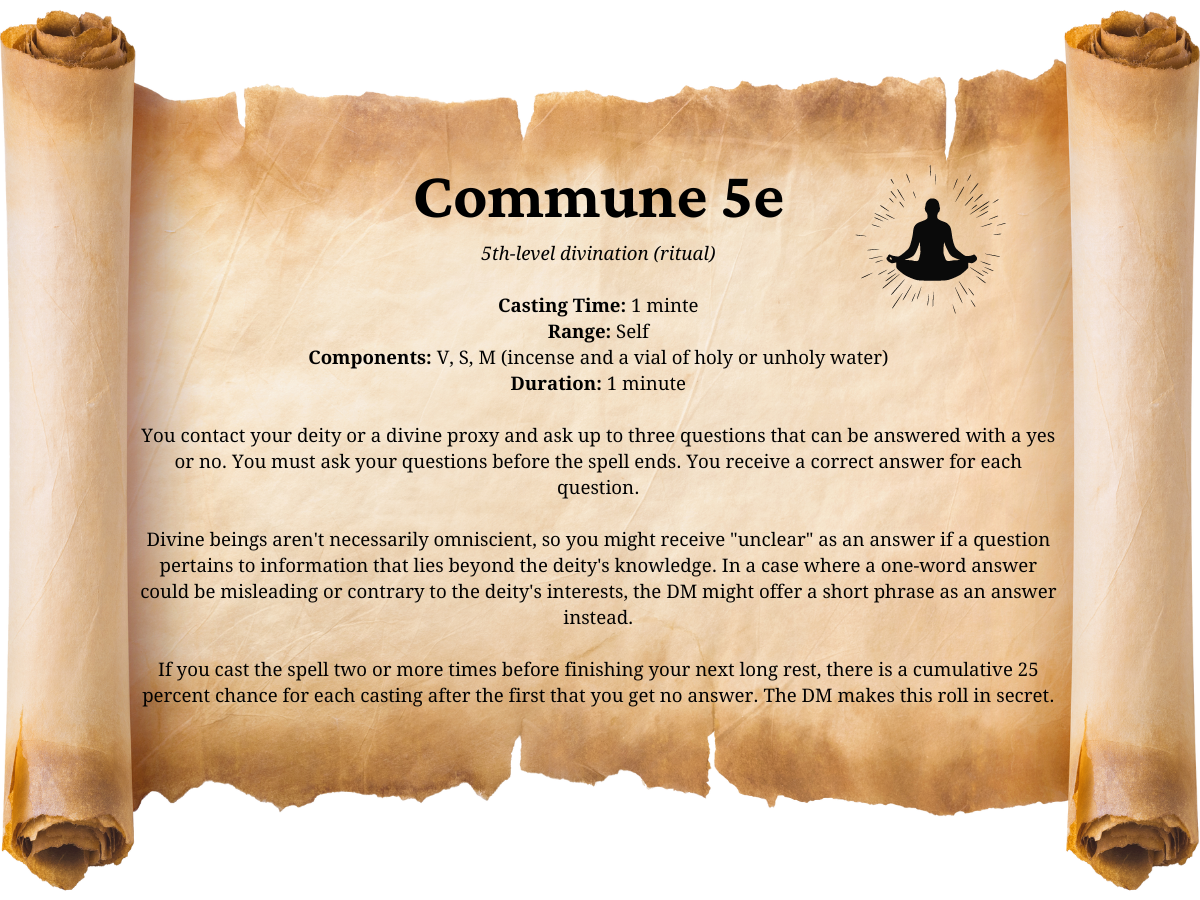
Commune 5e Spell Effects
5th-level divination (ritual)
Casting Time: 1 minute
Range: Self
Components: V, S, M (incense and a vial of holy or unholy water)
Duration: 1 minute
You contact your deity or a divine proxy and ask up to three questions that can be answered with a yes or no. You must ask your questions before the spell ends. You receive a correct answer for each question.
Divine beings aren't necessarily omniscient, so you might receive "unclear" as an answer if a question pertains to information that lies beyond the deity's knowledge. In a case where a one-word answer could be misleading or contrary to the deity's interests, the DM might offer a short phrase as an answer instead.
If you cast the spell two or more times before finishing your next long rest, there is a cumulative 25 percent chance for each casting after the first that you get no answer. The DM makes this roll in secret.
All information about Commune 5e comes from the DnD Player's Handbook.
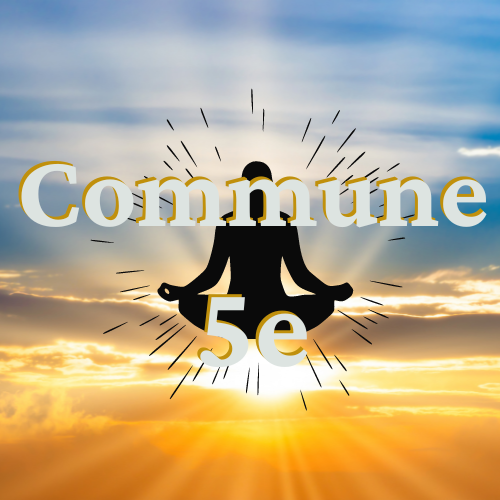
Classes That Can Cast Commune 5e
I'm often by surprised which classes are able to cast certain spells, and commune 5e fits into that category. Of course, clerics can cast commune 5e. However, within the player's handbook, no other classes may cast commune. I would assume that classes such as paladin and warlock would also enable characters to cast commune, but that is not the case!
Commune Usefulness
Automatically, any ritual spell in D&D provides additional value simply because:
- You do not have to prepare ritual spells.
- Ritual spells do not use up spell slots so long as you spend 10-additional minutes casting the spell.
So, any cleric can use commune 5e once per day for simply the time it takes to cast the spell. Though the spell typically only provides yes, no, or "unclear" as an answer, there is basically no downside or "cost" to using its effects. Really, commune provides a great way for clerics to roleplay at least semi-meaningful and useful interactions with their chosen deity.
Since the spell wears down in usefulness the more it's used each day, players can probably only cast it a few times each day before taking a long rest.
At the end of the day, the value provided from commune comes down to your dungeon master. Sometimes, a yes/ no question can be extremely valuable in life, whereas other times, it may be borderline worthless. If your dungeon master is feeling very generous, they may provide you with extremely good value from your commune spell. However, if you word your questions poorly, or your dungeon master isn't really into your divination attempts, then the spell may fall pretty flat.
Combine Commune 5e with the Following Spells
Commune 5e can be combined effectively with other spells and effects entirely based on what you learn from the spell. Or rather, it's based entirely upon what you "feel" you've learned from the spell.
For example, if you ask your deity if you're going to be attacked at night and the answer is "yes," then casting alarm 5e prior to bedtime would be a prudent idea. Similarly, if you find out that you're going to battle a devastating dragon the next day, then you should prepare a spell like aid 5e with that exact encounter in mind. Or, if you find out that the person you're tracking is riding an owlbear, then perhaps you should prepare animal friendship 5e.
Along the same line, if you ask if an enemy you're after is weak to fire damage, then prepare burning hands 5e. You could also ask if a villain you're facing is from another plane of existence, in which case preparing banishment 5e could be extremely valuable.
Really, you can see how just about any spell could be used following your interactions with a deity, via commune. Literally, the spell's entire realm of usefulness comes down to your question quality and your dungeon master's willingness to work with you.
So, be sure to bring them cookies for any gaming session in which you plan to cast commune 5e quite a bit.
Commune 5e Counters
Since commune 5e isn't a combat encounter-type spell, there really aren't many "counters" against it. If you have a very high-level, very powerful enemy who you're trying to learn about via your commune spell, perhaps there are ways that they could tamper with the information you're gathering. But really, commune 5e is what it is, and you get what you get.
Commune-Type Spells in Eternity TTRPG
When it comes to Eternity TTRPG, every spell in the game has both a combat-encounter use and a roleplaying use. It's not like in D&D how some spells, like commune 5e, are clearly meant for roleplaying, while others, like chill touch 5e are clearly meant for combat.
That being said, in Eternity TTRPG, every combat-based spell effect is very clearly laid out, whereas the only restrictions on a roleplaying use are that the effect closely matches the spell's name, its intended effect in battle, and doesn't exceed the overall "power" or purpose of the in-combat effect. Otherwise, players are free to determine how they want the spell to be used, outside of combat.
Below, I've provided a spell example for how the commune 5e effect could roughly be achieved in Eternity TTRPG.

Sage - Core Class Spell
Blessed Light (Magic): 4Range, the target heals +1HP. This Spell allows the target to heal 1HP above their normal max HP. This effect also Fatigues the target, giving lowered Resilience, Dodge, and Will for 1Day Duration (can stack without limit). Roll d20 to determine the amount of Fatigue.
- Also, up to 3 enemies in 4Range of your target, -7Faith vs. Will, deals 1light damage (deals 2damage to Shadow Aura units).
- You can still cast this Spell while Dazed, Locked, or Silenced. Also, roll d20. If you roll 15- 20, you also remove that effect from yourself.
- +2HP. This Critical allows the target to heal 2HP above their normal max HP. This effect also Fatigues the target, giving -3Resilience, -3Dodge, and -3Will for 1Day Duration (can stack without limit).
Players could interpret "Blessed Light" to be a kind of divine knowledge or provision of insight. It also wouldn't be beyond the spell's combat "power" to say that Blessed Light could be used allow a player to interact with their deity, for the purpose of helping them gain knowledge on whatever question(s) they ask. Since the purpose of divination spells in D&D is usually to avoid harm and gain advantage with knowledge gained, the net effect is something like healing or avoiding damage (which Blessed Light naturally provides).
With any group, the ultimate decision of whether or not to allow a specific roleplay effect from a spell comes down to the game master. But in my opinion, having a commune 5e-type effect from Blessed Light could be completely acceptable, depending on what the player wanted to learn from their deity.
Curious to learn more? Check out the
Eternity TTRPG Core Game!
Dice, Dungeons, Games & More - Eternity TTRPG
Share This Article

Author - Jacob Tegtman
Dear reader, I hope you enjoyed this article. Tabletop gaming has been a passion of mine since I was 6 years old. I've played just about every game from Dungeons and Dragons to video games like Final Fantasy. These games have inspired me, made me laugh, made me cry, and brought me endless hours of enjoyment.
I started Eternity TTRPG - and the indie tabletop game that goes along with it (Eternity Shop) - to share my love of gaming with others. I believe that in our technology-driven age, tabletop games help bring a sense of magic and community back into our world.
If you love the site, please share it with others! I have lots of gaming-related material for you to peruse and use in your own gaming sessions. If you have any questions about the site or want to contribute, just send me a message using the "Contact" page, which you can find in the site's footer.

